|
|
 |
|
June 24, 2021
Regardless of what you’re eating this summer, a white wine from Collio will fit the bill. This small region with fewer than 4,000 acres makes a broad range of white white wines extending from lively and fresh examples to ones substantial enough to stand up to a steak. The Italians have known the quality of wines from Collio for decades; it was among the first areas to be awarded DOC status in 1968.
Collio, sometimes called Collio Gorizia, is tucked away in Friuli Venezia Giulia, a region in the northeast of Italy, bordering Slovenia. It’s an apt name for the DOC—Collio comes from the Latin, collis, for hill—because almost all of the vineyards here are on hillsides. Eighty-five percent of Collio’s production is white, with Pinot Grigio and Sauvignon Blanc accounting for half the plantings. A variety of other grapes, including Pinot Bianco, and two, Friulano and Ribolla Gialla, capable of making heftier wines, also make noteworthy bottlings here.
Ribolla Gialla, a late ripening variety, is typically the last white grape harvested, sometimes even after the first of the reds are ripe. Despite that, it holds its acidity exceptionally well. Collio is an ideal locale for this grape because it must be planted on hillsides to achieve its potential. It’s a misunderstood variety because it can be transformed into two very different styles of wine. The so-called crisp and lively “classic” style accounts for about 80 percent production. The remaining 20 percent is so-called “orange” wine, which is white wine made in the red wine tradition with extended skin contact, usually by small estates. And though Collio doesn’t produce a lot of sparkling wine, almost every producer that does make one uses Ribolla Gialla for that purpose.
Collio’s soil, a mix of marl and sandstone, resulting from the area being underwater millions of year ago, is called ponca locally. Growers attribute a distinct minerality in the wines to this unique soil. It is a little surprising to walk through hillside vineyards and find fossilized shells.
Nestled between the Mediterranean and the Alps, the climate is cool, rainy and windy, which prevents grapes from becoming over ripe and helps explain the wonderful brightness in the wines.
Here are a trio of wines that show the incredible range of Collio DOC whites.
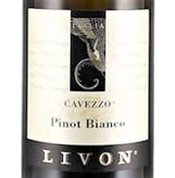 Livon, Pinot Bianco “Cavezzo” 2018: Livon, Pinot Bianco “Cavezzo” 2018:
Pinot Bianco often makes light, innocuous wines. Not this one. Livon’s 2018 Cavezzo has weight and an alluring texture. A hint of grapefruit-rind bitterness in a lively finish enhances its appeal. This stylish Pinot Bianco has surprising complexity and could redefine the category for you. It would be great as a stand-alone aperitivo, but would also be a good choice for simple grilled fish.
($40, 92 Points)
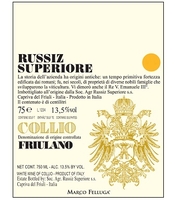 Russiz Superiore, Friulano 2019: Russiz Superiore, Friulano 2019:
Marco Felluga, the man in charge at Russiz Superiore, is a good name to remember for top-notch wines. In addition to a seductive texture, this 2019 Friulano has good power without a trace of heaviness. Nuances of orange-rind poke through and complement its fruitiness and spice. A small portion (about 15%) of the wine was fermented in oak barrels, which adds complexity without a trace of oakiness. Lively acidity keeps his weighty white fresh. This Friulano would be a fine complement to the meatiness of grilled red snapper.
($27, 93 Points).
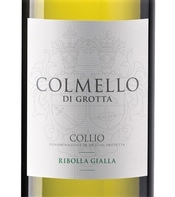 Colmello di Grotta, Ribolla Gialla 2018: Colmello di Grotta, Ribolla Gialla 2018:
This is a spritely, classically framed Ribolla Gialla that was fermented and aged in stainless steel and amphorae without skin contact. It captures your attention with a gorgeous array of white flowers and honeysuckle-like fruitiness, but without sweetness. This beguiling wine has good density and a hint of saline-like bitterness in the finish. It would be a good choice for linguine in a clam sauce or other hearty seafood.
($17, 93 Points).
Posted by Michael Apstein at 3:54 PM
|
|
June 17, 2021
On Tuesday, June 15, the wine world lost one of its most
insightful writers, and we at Wine Review Online lost one of our
founding contributors and best friends.
Paul’s life was marked by so many accomplishments that no
brief posting in this space can do more than begin to do it justice.
But begin we must, so let me start with this: He was such a modest and unassuming gentleman
that most of his hundreds of friends and acquaintances in the wine world didn’t
know he held a  Ph.D., was a beloved professor and department chair, and a
national leader in academic circles – including the highest levels of Phi Beta
Kappa. Ph.D., was a beloved professor and department chair, and a
national leader in academic circles – including the highest levels of Phi Beta
Kappa.
Likewise, many of Paul’s academic colleagues were unaware
that he had authored three wine books, had won James Beard, Cliquot and IACP
awards for them, was arguably the world’s leading authority on the history of
both American wine and the overall history of wine, was a successful restaurant
consultant, and had judged wine competitions all around the globe.
Paul began writing about wine as a regular columnist for The
Washington Times in 1994, and authored many freelance pieces aside from
that role before publishing American Vintage: The Rise of American Wine in
2000. In 2005 he helped launch Wine Review
Online by co-authoring “Wine With” — a wonderful feature offering recipes and
wine pairings — along with his beloved wife, Marguerite Thomas. Marguerite has continued to author “Wine With”
after Paul became too ill to continue, and the archive of recipes and pairing
tips on this Web site is a marvelous resource for all who love food and wine, as
Paul emphatically did: "Wine With"
In 2006, Paul published, The Great Wines of America: The
Top Forty Vintners, Vineyards, and Vintages, which won a Gourmand World
Cookbook Award, and about which Eric Asimov of The New York Times wrote, “Mr.
Lukacs’s list could easily have resulted in a familiar, ho-hum rendition of
greatest hits, but he refuses to settle for that. Instead, he offers a group of
wines that is fiercely individual, in which distinctiveness is as important as
critical approval.”
Paul’s most ambitious work on wine was published in 2012,
namely, Inventing Wine: A New History of One of the World’s Most Ancient
Pleasures. I’d imagine all can agree
that writing a history of 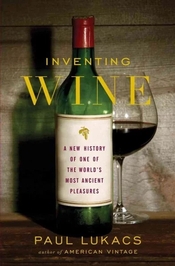 wine is the most audacious undertaking a wine writer
can attempt, and yet the book was even more daring than the title suggests. wine is the most audacious undertaking a wine writer
can attempt, and yet the book was even more daring than the title suggests.
Paul’s academic specialty was American Literature, but he
was also an accomplished historian (and the son of a famous one), and as such,
he knew this: Excellent historical
writing involves much more than chronicling something; it is an interpretive
art, and one’s interpretations must have theoretical principles underlying
them. Paul approached the history of
wine with thoroughly developed principles, and his book prompted Gerald Asher
(one of Paul’s favorite writers and the former wine editor of Gourmet
magazine) to write these perceptive words of praise: “Paul Lukacs’s book is
more than a history of wine: it’s a history of our perception of it — and ourselves — over
millennia. Informative, persuasive, and
entertaining, Lukacs helps us understand how wine, like music, books, or anything
else we create, is a cultural reflection of who we are and how we live.”
“Inventing Wine” was very widely and glowingly reviewed, but
rather than reading the reviews to learn about the book and about Paul, listen to the
recording of his conversation with Terry Gross (not a wine lover), who devoted
an entire episode of her famed National Public Radio show, “Fresh Air,” to a
discussion of the book. Here is a link,
which you may need to copy and paste into the URL field of a new browser
window:
https://www.npr.org/2012/12/04/166186416/inventing-wine-the-history-of-a-very-vintage-beverage
In addition to writing “Wine With,” Paul began writing a
regular column here on Wine Review Online in 2013, and these columns are
also archived on this Web site: Paul Lukacs. Every
one of them is more than mere musing about wine, as you’ll see. All of them argue a thesis, and regardless of
whether you share Paul’s view, you’ll be a more appreciative and critical lover
of wine after thinking along with him.
I’ll close with a personal note. I had the great and unique good fortune of
working shoulder to shoulder with Paul in both of his careers. Professors at the same university who were
falling madly in love with wine at the same time, but unbeknownst to one
another, we were introduced by our colleague Rick Boothby, with whom we forged
a tripartite friendship marked by a closeness that few people are fortunate to
experience. For more than 30 years, Paul
and I learned together, raised children together (my 28-year-old daughter has
never called him anything other than “Uncle Paul”), argued about politics and history
together, played tennis together, fought together to maintain excellence at our
university, tasted more than 48,000 wines together in our shared consulting business,
spent every New Year’s Eve together, and flew all over the world together,
taking the greatest possible pleasure in the company of one another. Paul didn't have a brother and neither did I,
but he was such a marvelous friend that I know no brother could have been his
equal for me.
Posted by Michael Franz at 6:02 PM
|
|
June 2, 2021
[Fearing that some occasional visitors to Wine Review Online might never have scrolled down the "Home" page far enough to see the consistently terrific "On My Table" feature by Mary Ewing-Mulligan MW, we're also posting it in the WRO Blog space this week. Check the archives for earlier versions, every one of which is valuable...as you'll agree.]
Dry Creek Vineyard, Dry Chenin Blanc, Clarksburg AVA 2020 ($16) and Chappellet Napa Valley Chenin Blanc “Molly Chappelet” 2020 ($40): I have in front of me two glasses of Chenin Blanc wine from California, both of which I enjoy and admire. But stylistically, they could hardly be more different. One is fairly light and refreshing, a lively wine that’s ideal for summer drinking. The other is rich, provocative, sensuous, the kind of wine that you want to sip and ponder.
Actually, it’s not unusual for Chenin Blanc to show a range of faces. Even in the grape’s two classic production areas, the Loire Valley and South Africa, a Chenin Blanc wine can be dry, off-dry, or sweet, including notable botrytised wines; it can be oaked or unoaked; it can be a still wine or a bubbly; it can be an everyday wine or it can be a wine worthy of a special occasion. In the U.S., Chenin Blanc vineyards are scarce compared to Chardonnay’s, and 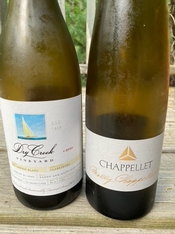 only a few producers take it seriously enough to produce a varietal Chenin Blanc. And yet it is something of a geek’s wine that serious winemakers want to take a crack at—and serious tasters are curious to taste in every manner of rendition. only a few producers take it seriously enough to produce a varietal Chenin Blanc. And yet it is something of a geek’s wine that serious winemakers want to take a crack at—and serious tasters are curious to taste in every manner of rendition.
Dry Creek Vineyard Dry Chenin Blanc — the light, lively refreshing wine in my duo — is a California classic. Winery founder David Stare found his Chenin Blanc inspiration in Vouvray, in the Loire Valley. He began producing Chenin Blanc in 1972, his first vintage, and Dry Creek Vineyard has made this wine every year since then. For more than 30 years now, the grapes have come from the Wilson Ranch in the Clarksburg AVA, southwest of Sacramento. The wine is produced in a very straightforward way — cool fermentation in stainless steel “barrels” — that neither adds nor subtracts any flavors apart from those of the grapes themselves.
In the 2020 Dry Creek Vineyard Dry Chenin Blanc ($16), the aromas and flavors suggest melon, white peach and mango with a slight floral whiff and, in the mouth, a marked note of slatey minerality, which I particularly enjoy. Winemaker comments mention watermelon and cucumber, descriptors are missing from my own notes but in retrospect, ring true. The wine is dry although not bone dry, with light medium body. Typically of Chenin Blanc, high acidity lurks beneath the wine’s slightly oily texture. The long finish is worthy of a much more expensive wine. Despite its high acidity and simplicity of winemaking, this is not a generic high-acid, crisp, light wine a la a simple Pinot Grigio: it fills the breadth of your mouth in a way that high-acid whites generally do not. Thoroughly intriguing, and yet such an easy, delightful wine, with only 12.5 percent alcohol.
The 2020 Molly Chappellet Napa Valley Chenin Blanc ($40) is the rich, provocative, sensuous player in my duo. It hails from Chappellet’s Pritchard Hill property in the Vaca Mountains of eastern Napa Valley. When the family moved to Pritchard Hill in 1967, Chenin Blanc already grew there. After eventual replanting of the vineyard, the vines today are more than 15 years old. The company is dedicated to perpetuating Chenin Blanc; winemaker Phillip Corallo-Titus claims that “Chappellet isn’t Chappellet without Chenin Blanc.”
This wine’s aromas and flavors are exotic and compelling, with notes of melon, guava, dried white fruits and blossom, along with a light smoky overtone and lemony notes on the finish. In your mouth, the wine is dry and full-bodied, with acid that’s medium on the cusp of high, and full-throttle 14 percent alcohol that gives the wine considerable weight and presence in your mouth. The texture is viscous with a contrasting mineral earthiness. Some sweetness in a wine of this weight and depth style would be logical and harmonious; the dryness of this wine instead is provocative.
Winemaking for this wine involved light pressing of the grapes followed by cold fermentation in an approximately 50-50 combination of neutral barrels and stainless steel tanks and finally six months of aging on the lees. Both the barrel fermentation and lees aging enhance the wine’s textural richness, while the unoaked portion enhances its freshness and energy.
Both of these interpretations of Chenin Blanc have fascinating aromas but also strong structural elements that create a complete wine. Light and refreshing or provocative and thought compelling: that’s your choice. Personally, I can think of situations appropriation to each style.
2020 Dry Creek Vineyard Dry Chenin Blanc, Clarksburg AVA, $16, 90 Points
2020 Molly Chappellet Napa Valley Chenin Blanc, $40, 92 Points
Posted by Mary Ewing-Mulligan at 8:35 PM
|
|
 |
|